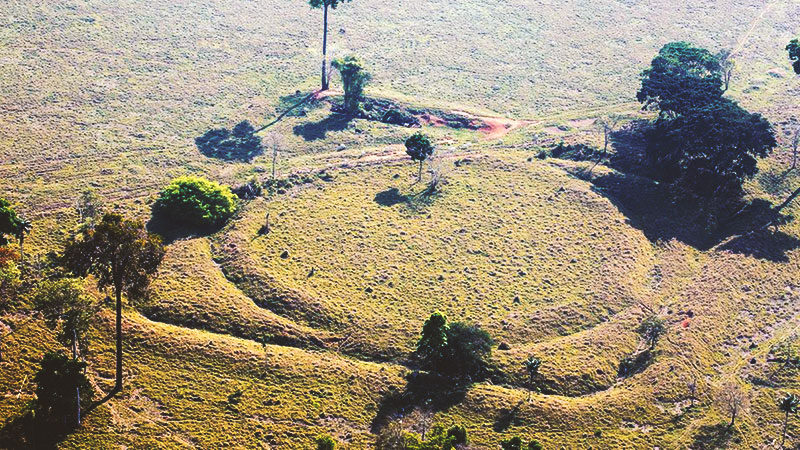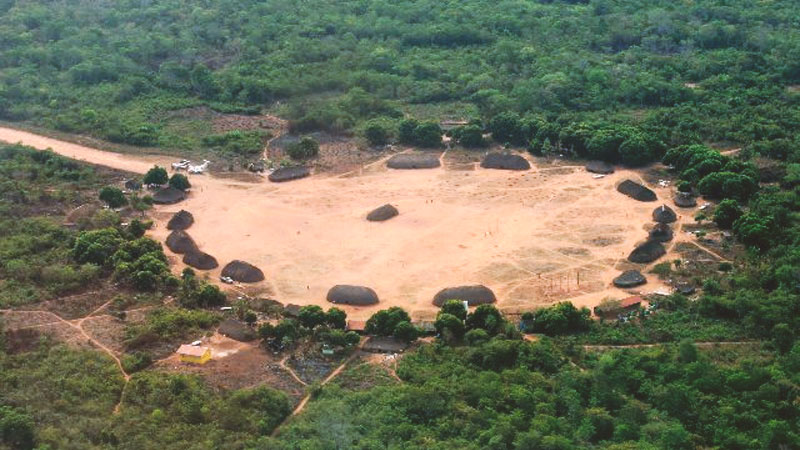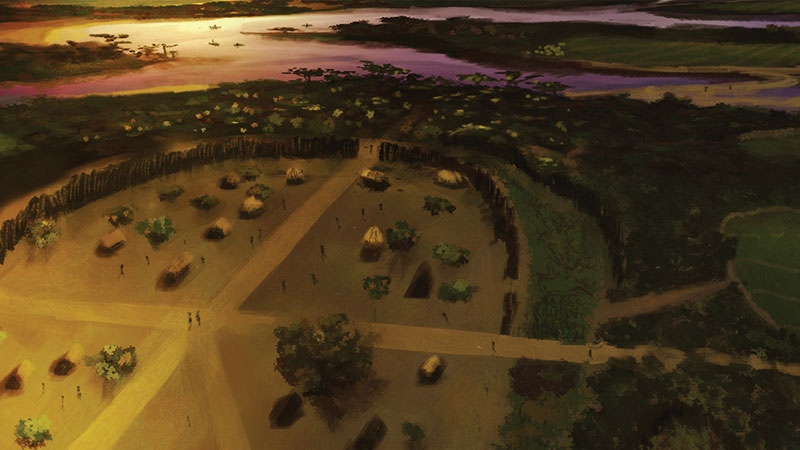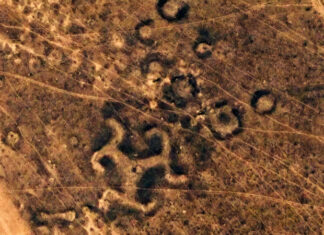It is inevitable to think of the Amazon rainforest as a gigantic virgin forest, practically untouched and everyone knows that the region is inhabited by dozens of indigenous peoples.
But the predominant idea in people’s imagination is that they have always lived in perfect harmony with the environment, interfering as little as possible with nature and taking from it only what is essential for their survival.
Apparently, this romantic vision is completely wrong.
Archaeological discoveries made over the last 3 decades indicate that, before Brazil was discovered, the native population of the Amazon Rainforest was much more numerous and sophisticated than is commonly imagined.
Between the years 1000 and 1400, true super villages interconnected by good roads dominated certain regions. In others, groups of up to 15,000 built embankments up to 10 meters high to build their houses on them and protect against flooding.
“There were complex societies in almost the entire Amazon River, in the middle and lower Orinoco, in Bolivia and in other areas. In 1500, the Amazon was probably an area of enormous cultural variability, with regionally interconnected groups”, says American archaeologist Michael Heckenberger, who has been studying a set of groups of this type in the Alto Xingu for years.
Marajoaras Tribes
The idea of an “urbanized” Amazon is actually old. When the first Spanish explorers came down the Amazon River from the Andes in 1542, the mission’s chronicler, a Dominican friar named Gaspar de Carvajal, described it as a densely populated place.
“When they saw us, more than 200 pirogues (canoes) came out to meet us in the middle of the river, each with 20, 30 or 40 Indians. On dry land, it was wonderful to see the crowds that existed in the villages, all playing instruments and dancing”, wrote the friar.
From the 17th century onwards, descriptions of this type became rare, which led many skeptics to consider that Carvajal and other explorers greatly exaggerated their reports.
With the advent of scientific archeology in the 19th century, the hypothesis gained strength that excessive heat, constant rain and soil poor in nutrients would make the emergence of any type of civilization in the Amazon unfeasible, as it would be impossible to produce food to sustain large populations.
From the 1980s onwards, however, this view began to be questioned. The discoveries began at the mouth of the Amazon, where American archaeologist Anna Roosevelt, from the University of Illinois, worked.
On Marajó Island, she studied the so-called “tesos”, hills whose origin is partially or completely artificial, and concluded that they had been built by a large Marajoara population around the year 1000.
The tribal chiefs would have used the tesos as fortresses and observation posts and these people also came up with the idea of building anti-flood embankments.
Based on the volume of material found in archaeological sites, it is believed that around 15 thousand people may have lived there in the 16th century.
The Lost City of Z

On April 20, 1925, British explorer Percy Fawcett, his son Jack and friend Raleigh Rimmell left Cuiabá, in Mato Grosso, heading for Alto Xingu.
The objective was to discover the “Lost City of Z”, a supposed advanced civilization that would have existed in the middle of the Amazon.
The small expedition disappeared and no one knows exactly what the fate of its members was.
The legend is similar to that of Eldorado, a city full of gold and silver hidden in the middle of the forest, but it has nothing to do with Fawcett or Brazil. Eldorado emerged in Central America, thousands of kilometers from the Xingu, among the Spanish conquerors enchanted by what they found in the cities built by the Mayans and Aztecs in the tropical forests of that region.
The Geoglyphs of Acre
More than 2 thousand kilometers away from Marajó Island, in Acre, there is another type of trace of the civilizations that prospered in the Amazon before the arrival of Pedro Álvares Cabral. They are geoglyphs, geometric designs that can only be noticed when seen from above, more or less like the Nazca lines in Peru.
“These figures indicate that the Acre forest was densely occupied around the year 1200”, says researcher Alceu Ranzi, from the Federal University of Acre.
Forming squares, rectangles and diamonds, the designs are up to 300 meters in diameter and are delimited by trenches up to 3 meters deep. Most were only identified recently, due to deforestation in the region. Before, they remained hidden by trees.

Ranzi considers that it is still too early to say how the geoglyphs were made and what their original function was. Many are in relatively elevated areas. Therefore, says the researcher, they may have been used for monitoring and defending the territory.
It is possible that the indigenous people deforested vast areas of Acre to create their network of geoglyphs, of which there are more than 200 in a radius of just 250 square kilometers.
“But I tend to believe that, because of natural phenomena such as exceptionally intense El Ninõs, the environment was not dense forest at the time of the occupation,” says Ranzi.
The researcher estimates that a population of approximately 60 thousand people lived in the region.
Xingu Super Villages
In Alto Xingu, studies led by archaeologist Michael Heckenberger are also revealing the “urban” face that the Amazon once had. Working in partnership with members of the Cuicuro ethnic group, he claims to have identified a network of ancient villages, most of them from the period immediately before the arrival of Europeans, which make current indigenous villages appear tiny.
Organized in large circles and capable of housing thousands of people, these groups were surrounded by ditches several meters wide and deep, surrounded by palisades (a set of wooden stakes driven into the ground to serve as defense) and interconnected by roads up to 40 meters wide.
They would have emerged in the 9th century and reached their peak around 400 years later, in the 13th century. They maintained power and hierarchy relations among themselves. They made alliances, negotiated and also war.

At their peak, some of these centers were home to more than 2 thousand residents. It is not known exactly how they disappeared, but it is likely that several collapsed before the arrival of Europeans.
There is evidence that the Indians in the network of Amazonian super villages had a population that, combined, reached 50 thousand inhabitants.
Satellite images have already revealed areas of forest that were probably farms or orchards, and to this day there are stretches of virgin forest in the region that produce edible fruits in quantities well above the average, a probable legacy of the time when the natives skillfully managed the forest, selecting the most fruitful plants to supplement your livelihood.
“It’s as if these ancient inhabitants of Xingu had an alternative model of organization,” says Heckenberger.
Instead of bringing everyone together in a single, unsustainable group, they lived distributed in small or medium-sized villages, connected by roads that enabled the formation of trade networks and cultural exchange.
All this data is still preliminary, but it leads us to believe that the Amazon was home to many more people than was commonly imagined years ago.
It is likely that population density plummeted with epidemics brought by Europeans, as appears to have happened in other regions of the Americas, but this did not prevent Amazonian civilizations from leaving some legacies.
In the oral tradition of the Cuicuros and other peoples of the Xingu, there are references to the great works of the past and the indigenous ceramics produced today are still very similar to those found in several archaeological sites.


















